People, Food, and Manufacturing: Interconnected Challenges
America began getting serious about the coming war about two years before Pearl Harbor was attacked. After months of preparation, the new Draft began late in 1940, and the Hicksville Selective Service Board had its first quota to attain. By July 1, 1941, it would have to supply at least 425 civilians fit to wear uniforms, either as draftees or enlistees.
As that deadline approached, the combined population of Hicksville and the surrounding villages grew, thanks to the arrival of well over one thousand new families. Most of them had been attracted to the area by the pre-wartime jobs that now were being created at the local defense plants.
Brooklyn Daily Eagle, November 26, 1940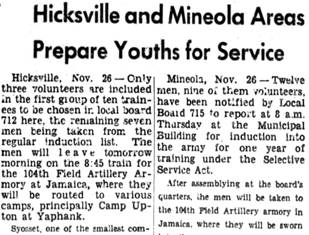
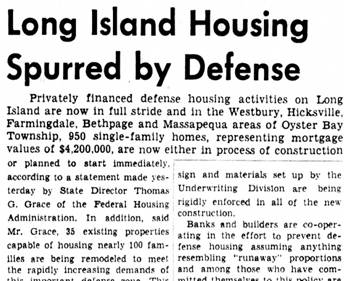
Brooklyn Daily Eagle, July 27, 1941
Those new families needed homes, and they had cars to be serviced, and growing children to be taught, fed, and clothed - at a time when there were 425 fewer local men in the labor market to work in construction, in garages, on farms, in factories, and in stores.
Clearly, there were problems ahead, and Hicksville experienced one quite early, as it tried to adapt to the parallel demands for more soldiers and more wartime labor. The head of its Draft Board, dentist Elwood A. Curtis (no stranger to readers of Ancient Hixtory) initially was unhappy that some men, deferred from the draft as essential farm workers, had taken jobs at local defense plants. Upon reflection, however, he realized that much farm work was seasonal, and that employing otherwise-idle farm laborers in a second essential industry would be a good thing.
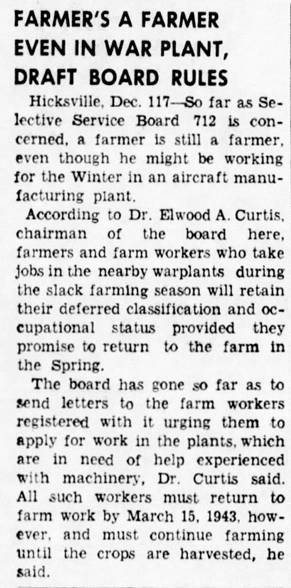
Brooklyn Daily Eagle, December 17, 1942
Labor shortages steadily became acute, so acute that many employers eventually noticed the obvious: You could replace male workers who went off to war by opening more jobs to women. The LIRR hired many (in its own words) "Train Women" to fill wartime vacancies. The first women brought on board became Engine Cleaners for steam locomotives, doing labor-intensive tasks previously performed only by men.
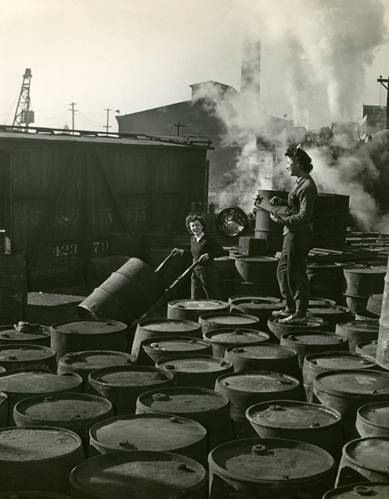
Two of the first female Engine Cleaners on the LIRR,
checking oil inventory and getting a fresh barrel so they can get to work
Seeley G. Mudd Manuscript Library, Princeton University
https://blogs.princeton.edu/mudd/2018/03/world-war-ii-trainwomen-of-the-long-island-railroad/
In 1942, among the jobs for which Grumman hired women was Test Pilot.

Cecil "Teddy" Kenyon in a wartime Camel cigarette advertisement,
with Grumman headquarters shown in the background
timeline.com
In some cases, the most effective way to replace laborers lost to military service was to employ migratory workers.
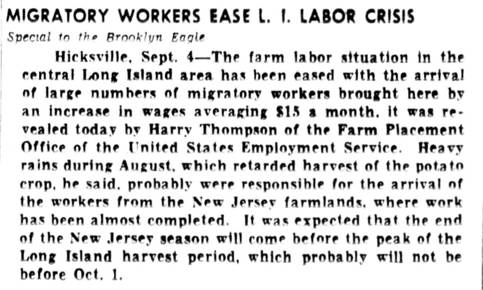
Brooklyn Daily Eagle, September 4, 1942
***

